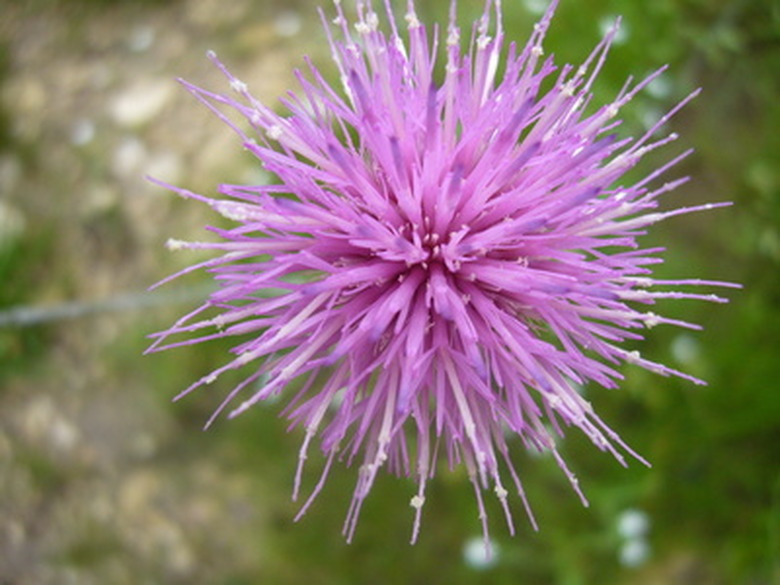How To Make A Steam Weed Killer
Weeds crop up in every garden, every year. You can spend a weekend rooting up weeds by hand only to discover new weed plants the following week. To combat weeds without introducing chemicals into your yard or spending a lot of money on organic weed products or a commercial steamer, use water. Steam and boiling water combat weeds by heating them to the point where plant cells die. Steam is hotter than air or fire, so it works to kill weed plants quickly.
Step 1
Fill an electric steamer with water. Plug the steamer into an outdoor electrical socket and wait for it to heat up.
- Weeds crop up in every garden, every year.
- Steam and boiling water combat weeds by heating them to the point where plant cells die.
Step 2
Carry the steamer unit over to your weed patch. Hold the steamer wand over the area and depress the steam button on your unit to shoot steam at the weeds. Steam the weeds until they are doused with hot vapors.
Step 3
Repeat this process on all weedy areas. If you need to move the steamer to another outlet or use an extension cord, do so.
Step 4
Bring a pot of water to a rolling boil, then remove it from the heat. Pour the boiling water over weeds growing in your walkway or driveway. Covering the area will kill all plants, so this method works best on surfaces such as driveways that attract weeds but not grass or desired plants. It will take a couple of days for the weeds to shrivel up and die.
- Carry the steamer unit over to your weed patch.
- Hold the steamer wand over the area and depress the steam button on your unit to shoot steam at the weeds.
Make A Steam Weed Killer
When it comes to weed killers, many products on the market contain chemicals that could be harmful to people, pets and the environment as a whole. A hot-water sprayer for weeds directs a thin stream of extremely hot water atop the weed crown, cooking the weed from the top down. The leaves will die off on their own within a few days. Either type of tool works well when treating weeds popping up in paved areas. Treating a weed amidst other plants, such as in the middle of a lawn, requires a sprayer with enough control to pinpoint only the weed. Otherwise, nearby grass may also be killed. Be sure to wear boots or water-resistant footwear and pants to avoid burns. Do not use this or any other plug-in device during rain or while the yard or pavement is soaked, as the moisture around the cord could pose an electrical hazard if the cord has any cuts in it. If you don't own a steam cleaner, you can still make your own hot water and steam weed killer to treat pesky weeds growing in gravel, between pavers and other locations away from desirable plants. Boil water in a tea kettle and keep a metal pot handy.
- When it comes to weed killers, many products on the market contain chemicals that could be harmful to people, pets and the environment as a whole.
- If you don't own a steam cleaner, you can still make your own hot water and steam weed killer to treat pesky weeds growing in gravel, between pavers and other locations away from desirable plants.
Things Needed
- Electric steamer
- Pot
Tip
If you don't have an electrical steamer, try using an iron with a steam function, but be aware that the iron itself will get hot.
References
- Green Living Tips: Earth Friendly Weed Killer
- Go Organic Gardening: An Easy Organic Weed Killer
- University of California Statewide Integrated Pest Management Program: Weed Management in Landscapes
- Karcher: HDS: Tackles Weeds With Hot Water
- Weedtechnics: Does Steam Weed Control Actually Work?
- Heatweed: The Heatweed Method
- Hammacher Schlemmer: The Weed Killing Steamer
- Dynasteam: Dynasteam DS 2000 Operation Manual
- Houselogic: 7 Ways to Kill Yard Weeds, Naturally
- Hotzot: FAQs
- The Home Depot: How to Kill Weeds in Your Lawn Organically
